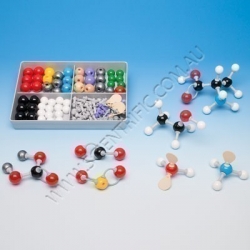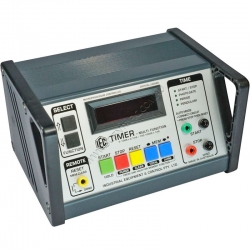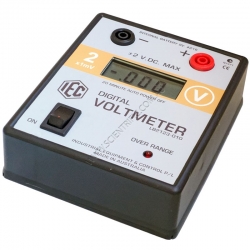164 results found for 'Red'. Prev |1|2|3|4|5|6|7 | Next | View 100 per page
Low relevance matches: 542 other results may be of interest to you. Show low relevance matches
DNA - The transmission of heritable characteristics from one generation to the next involves DNA and genes ACSSU097 Year 6 Physical Sciences
Electrical Circuits - Electrical energy can be transferred and transformed in electrical circuits and can be generated from a range of sources ACSSU115 Year 7 Earth and Space Sciences
Earth Moon Sun - Predictable phenomena on Earth, including seasons and eclipses, are caused by the relative positions of the sun, Earth and the moon ACSSU229 Year 10 Physical Sciences
Forces and Motion - The motion of objects can be described and predicted using the laws of physics ACSBL029 Year 11 Biodiversity and the interconnectedness of life
Ecosystem dynamics - Models of ecosystem interactions (for example, food webs, successional models) can be used to predict the impact of change and are based on interpretation of and extrapolation from sample data (for example, data derived from ecosystem surveying techniques ACSBL085 Year 12 Heredity and continuity of life
DNA genes and the continuity of life - Frequencies of genotypes and phenotypes of offspring can be predicted using probability models, including Punnett squares, and by taking into consideration patterns of inheritance, including the effects of dominant, autosomal and sex-linked alleles and mu ACSBL090 Year 12 Heredity and continuity of life
Continuity of life on Earth - Natural selection occurs when selection pressures in the environment confer a selective advantage on a specific phenotype to enhance its survival and reproduction; this results in changes in allele frequency in the gene pool of a population ACSBL091 Year 12 Heredity and continuity of life
Continuity of life on Earth - In additional to environmental selection pressures, mutation, gene flow and genetic drift can contribute to changes in allele frequency in a population gene pool and results in microevolutionary change ACSCH056 Year 11 Molecular interactions and reactions
Intermolecular forces and gases - The shapes of molecules can be explained and predicted using three dimensional representations of electrons as charge clouds and using valence shell electron pair repulsion (VSEPR) theory ACSCH073 Year 11 Molecular interactions and reactions
Rates of chemical reactions - Catalysts, including enzymes and metal nanoparticles, affect the rate of certain reactions by providing an alternative reaction pathway with a reduced activation energy, hence increasing the proportion of collisions that lead to a chemical change ACSCH091 Year 12 Equilibrium acids and redox reactions
Chemical equilibrium systems - Over time, physical changes and reversible chemical reactions reach a state of dynamic equilibrium in a closed system, with the relative concentrations of products and reactants defining the position of equilibrium ACSCH096 Year 12 Equilibrium acids and redox reactions
Chemical equilibrium systems - Equilibrium position can be predicted qualitatively using equilibrium constants ACSCH097 Year 12 Equilibrium acids and redox reactions
Chemical equilibrium systems - Acids are substances that can act as proton (hydrogen ion) donors and can be classified as monoprotic or polyprotic depending on the number of protons donated by each molecule of the acid ACSCH098 Year 12 Equilibrium acids and redox reactions
Chemical equilibrium systems - The strength of acids is explained by the degree of ionisation at equilibrium in aqueous solution, which can be represented with chemical equations and equilibrium constants (Ka) ACSCH099 Year 12 Equilibrium acids and redox reactions
Chemical equilibrium systems - The relationship between acids and bases in equilibrium systems can be explained using the Brřnsted Lowry model and represented using chemical equations that illustrate the transfer of hydrogen ions ACSCH100 Year 12 Equilibrium acids and redox reactions
Chemical equilibrium systems - The pH scale is a logarithmic scale and the pH of a solution can be calculated from the concentration of hydrogen ions; Kw can be used to calculate the concentration of hydrogen ions from the concentration of hydroxide ions in a solution ACSCH101 Year 12 Equilibrium acids and redox reactions
Chemical equilibrium systems - Acidbase indicators are weak acids or bases where the acidic form is of a different colour to the basic form ACSCH102 Year 12 Equilibrium acids and redox reactions
Chemical equilibrium systems - Volumetric analysis methods involving acidbase reactions rely on the identification of an equivalence point by measuring the associated change in pH, using chemical indicators or pH meters, to reveal an observable end point ACSCH103 Year 12 Equilibrium acids and redox reactions
Oxidation and reduction - A range of reactions, including displacement reactions of metals, combustion, corrosion, and electrochemical processes, can be modelled as redox reactions involving oxidation of one substance and reduction of another substance ACSCH104 Year 12 Equilibrium acids and redox reactions
Oxidation and reduction - Oxidation can be modelled as the loss of electrons from a chemical species, and reduction can be modelled as the gain of electrons by a chemical species; these processes can be represented using half equations ACSCH106 Year 12 Equilibrium acids and redox reactions
Oxidation and reduction - The relative strength of oxidising and reducing agents can be determined by comparing standard electrode potentials ACSCH107 Year 12 Equilibrium acids and redox reactions
Oxidation and reduction - Electrochemical cells, including galvanic and electrolytic cells, consist of oxidation and reduction half reactions connected via an external circuit that allows electrons to move from the anode (oxidation reaction) to the cathode (reduction reaction) ACSCH108 Year 12 Equilibrium acids and redox reactions
Oxidation and reduction - Galvanic cells, including fuel cells, generate an electrical potential difference from a spontaneous redox reaction; they can be represented as cell diagrams including anode and cathode halfequations ACSCH110 Year 12 Equilibrium acids and redox reactions
Oxidation and reduction - Cell potentials at standard conditions can be calculated from standard electrode potentials; these values can be used to compare cells constructed from different materials ACSCH130 Year 12 Structure synthesis and design
Properties and structure of organic materials - Data from analytical techniques, including mass spectrometry, xray crystallography and infrared spectroscopy, can be used to determine the structure of organic molecules, often using evidence from more than one technique ACSPH040 Year 11 Thermal nuclear and electrical physics
Electrical circuits - The energy available to charges moving in an electrical circuit is measured using electric potential difference, which is defined as the change in potential energy per unit charge between two defined points in the circuit ACSPH041 Year 11 Thermal nuclear and electrical physics
Electrical circuits - Energy is required to separate positive and negative charge carriers; charge separation produces an electrical potential difference that can be used to drive current in circuits ACSPH061 Year 11 Linear Motion and Waves
Linear motion and force - Representations, including graphs and vectors, and/or equations of motion, can be used qualitatively and quantitatively to describe and predict linear motion ACSPH064 Year 11 Linear Motion and Waves
Linear motion and force - Momentum is a property of moving objects; it is conserved in a closed system and may be transferred from one object to another when a force acts over a time interval ACSPH065 Year 11 Linear Motion and Waves
Linear motion and force - Energy is conserved in isolated systems and is transferred from one object to another when a force is applied over a distance; this causes work to be done and changes to kinetic and/or potential energy of objects ACSPH073 Year 11 Linear Motion and Waves
Waves - A mechanical system resonates when it is driven at one of its natural frequencies of oscillation; energy is transferred efficiently into systems under these conditions ACSPH076 Year 11 Linear Motion and Waves
Waves - A wave model explains a wide range of lightrelated phenomena including reflection, refraction, total internal reflection, dispersion, diffraction and interference; a transverse wave model is required to explain polarisation ACSPH021 Year 11 Thermal nuclear and electrical physics
Heating processes - Change of state involves internal energy changes to form or break bonds between atoms or molecules; latent heat is the energy required to be added to or removed from a system to change the state of the system






















164 results found for 'Red'. Prev |1|2|3|4|5|6|7 | Next | View 100 per page
Low relevance matches: 542 other results may be of interest to you. Show low relevance matches
Curriculum resources related to 'Red'
ACSSU184 Year 10 Biological SciencesDNA - The transmission of heritable characteristics from one generation to the next involves DNA and genes ACSSU097 Year 6 Physical Sciences
Electrical Circuits - Electrical energy can be transferred and transformed in electrical circuits and can be generated from a range of sources ACSSU115 Year 7 Earth and Space Sciences
Earth Moon Sun - Predictable phenomena on Earth, including seasons and eclipses, are caused by the relative positions of the sun, Earth and the moon ACSSU229 Year 10 Physical Sciences
Forces and Motion - The motion of objects can be described and predicted using the laws of physics ACSBL029 Year 11 Biodiversity and the interconnectedness of life
Ecosystem dynamics - Models of ecosystem interactions (for example, food webs, successional models) can be used to predict the impact of change and are based on interpretation of and extrapolation from sample data (for example, data derived from ecosystem surveying techniques ACSBL085 Year 12 Heredity and continuity of life
DNA genes and the continuity of life - Frequencies of genotypes and phenotypes of offspring can be predicted using probability models, including Punnett squares, and by taking into consideration patterns of inheritance, including the effects of dominant, autosomal and sex-linked alleles and mu ACSBL090 Year 12 Heredity and continuity of life
Continuity of life on Earth - Natural selection occurs when selection pressures in the environment confer a selective advantage on a specific phenotype to enhance its survival and reproduction; this results in changes in allele frequency in the gene pool of a population ACSBL091 Year 12 Heredity and continuity of life
Continuity of life on Earth - In additional to environmental selection pressures, mutation, gene flow and genetic drift can contribute to changes in allele frequency in a population gene pool and results in microevolutionary change ACSCH056 Year 11 Molecular interactions and reactions
Intermolecular forces and gases - The shapes of molecules can be explained and predicted using three dimensional representations of electrons as charge clouds and using valence shell electron pair repulsion (VSEPR) theory ACSCH073 Year 11 Molecular interactions and reactions
Rates of chemical reactions - Catalysts, including enzymes and metal nanoparticles, affect the rate of certain reactions by providing an alternative reaction pathway with a reduced activation energy, hence increasing the proportion of collisions that lead to a chemical change ACSCH091 Year 12 Equilibrium acids and redox reactions
Chemical equilibrium systems - Over time, physical changes and reversible chemical reactions reach a state of dynamic equilibrium in a closed system, with the relative concentrations of products and reactants defining the position of equilibrium ACSCH096 Year 12 Equilibrium acids and redox reactions
Chemical equilibrium systems - Equilibrium position can be predicted qualitatively using equilibrium constants ACSCH097 Year 12 Equilibrium acids and redox reactions
Chemical equilibrium systems - Acids are substances that can act as proton (hydrogen ion) donors and can be classified as monoprotic or polyprotic depending on the number of protons donated by each molecule of the acid ACSCH098 Year 12 Equilibrium acids and redox reactions
Chemical equilibrium systems - The strength of acids is explained by the degree of ionisation at equilibrium in aqueous solution, which can be represented with chemical equations and equilibrium constants (Ka) ACSCH099 Year 12 Equilibrium acids and redox reactions
Chemical equilibrium systems - The relationship between acids and bases in equilibrium systems can be explained using the Brřnsted Lowry model and represented using chemical equations that illustrate the transfer of hydrogen ions ACSCH100 Year 12 Equilibrium acids and redox reactions
Chemical equilibrium systems - The pH scale is a logarithmic scale and the pH of a solution can be calculated from the concentration of hydrogen ions; Kw can be used to calculate the concentration of hydrogen ions from the concentration of hydroxide ions in a solution ACSCH101 Year 12 Equilibrium acids and redox reactions
Chemical equilibrium systems - Acidbase indicators are weak acids or bases where the acidic form is of a different colour to the basic form ACSCH102 Year 12 Equilibrium acids and redox reactions
Chemical equilibrium systems - Volumetric analysis methods involving acidbase reactions rely on the identification of an equivalence point by measuring the associated change in pH, using chemical indicators or pH meters, to reveal an observable end point ACSCH103 Year 12 Equilibrium acids and redox reactions
Oxidation and reduction - A range of reactions, including displacement reactions of metals, combustion, corrosion, and electrochemical processes, can be modelled as redox reactions involving oxidation of one substance and reduction of another substance ACSCH104 Year 12 Equilibrium acids and redox reactions
Oxidation and reduction - Oxidation can be modelled as the loss of electrons from a chemical species, and reduction can be modelled as the gain of electrons by a chemical species; these processes can be represented using half equations ACSCH106 Year 12 Equilibrium acids and redox reactions
Oxidation and reduction - The relative strength of oxidising and reducing agents can be determined by comparing standard electrode potentials ACSCH107 Year 12 Equilibrium acids and redox reactions
Oxidation and reduction - Electrochemical cells, including galvanic and electrolytic cells, consist of oxidation and reduction half reactions connected via an external circuit that allows electrons to move from the anode (oxidation reaction) to the cathode (reduction reaction) ACSCH108 Year 12 Equilibrium acids and redox reactions
Oxidation and reduction - Galvanic cells, including fuel cells, generate an electrical potential difference from a spontaneous redox reaction; they can be represented as cell diagrams including anode and cathode halfequations ACSCH110 Year 12 Equilibrium acids and redox reactions
Oxidation and reduction - Cell potentials at standard conditions can be calculated from standard electrode potentials; these values can be used to compare cells constructed from different materials ACSCH130 Year 12 Structure synthesis and design
Properties and structure of organic materials - Data from analytical techniques, including mass spectrometry, xray crystallography and infrared spectroscopy, can be used to determine the structure of organic molecules, often using evidence from more than one technique ACSPH040 Year 11 Thermal nuclear and electrical physics
Electrical circuits - The energy available to charges moving in an electrical circuit is measured using electric potential difference, which is defined as the change in potential energy per unit charge between two defined points in the circuit ACSPH041 Year 11 Thermal nuclear and electrical physics
Electrical circuits - Energy is required to separate positive and negative charge carriers; charge separation produces an electrical potential difference that can be used to drive current in circuits ACSPH061 Year 11 Linear Motion and Waves
Linear motion and force - Representations, including graphs and vectors, and/or equations of motion, can be used qualitatively and quantitatively to describe and predict linear motion ACSPH064 Year 11 Linear Motion and Waves
Linear motion and force - Momentum is a property of moving objects; it is conserved in a closed system and may be transferred from one object to another when a force acts over a time interval ACSPH065 Year 11 Linear Motion and Waves
Linear motion and force - Energy is conserved in isolated systems and is transferred from one object to another when a force is applied over a distance; this causes work to be done and changes to kinetic and/or potential energy of objects ACSPH073 Year 11 Linear Motion and Waves
Waves - A mechanical system resonates when it is driven at one of its natural frequencies of oscillation; energy is transferred efficiently into systems under these conditions ACSPH076 Year 11 Linear Motion and Waves
Waves - A wave model explains a wide range of lightrelated phenomena including reflection, refraction, total internal reflection, dispersion, diffraction and interference; a transverse wave model is required to explain polarisation ACSPH021 Year 11 Thermal nuclear and electrical physics
Heating processes - Change of state involves internal energy changes to form or break bonds between atoms or molecules; latent heat is the energy required to be added to or removed from a system to change the state of the system
Products related to 'Red'

Vernier Radiation Monitor
VERNIER RADIATION MONITOR
Use the Vernier Radiation Monitor to explore radiation statistics, measure the rate of nuclear decay and monitor radon progeny.
This easy-to-use sensor consists of a Geiger-Mueller tube mounted in a small rugged plastic case. A thin window pro...
Order code: VRM-BTD



Vernier Voltage Probe
VERNIER VOLTAGE PROBE
Vernier's Voltage Probe is a bipolar sensor that measures direct voltage. The black lead is grounded along with the interface and the sensor reports the potential difference between the red lead and ground. It can be used just like a standard voltmet...
Order code: VP-BTA



Vernier Differential Voltage Probe
VERNIER DIFFERENTIAL VOLTAGE PROBE
With a range of ±6.0 V this system is ideal for use in "battery and bulb" circuits. Use it with the Current Probe to explore Ohm's law, phase relationships in reactive components and much more. Use multiple Differential Voltage Probes to...
Order code: DVP-BTA



Spectacular Science
Do-It-Yourself Science Show.
Amaze your audience with awesome chemistry demonstrations! Rehearse and perform a science show to entertain your friends and family and teach them some science in the process. The experiments in this kit have been carefully selected and scri...
Order code: 642419



ScienceWiz Teacher 6 Pack Magnetism
This ScienceWiz™ teacher's pack includes enough equipment for 6 students to explore and develop a fundamental understanding of the key concepts of magnetism while building a foundation for analytical thinking. Comes in a specially designed box for easy storage with compartment...
Order code: SCW9901


ScienceWiz Magnetism Kit Sample
This ScienceWiz™ Sample Kit enables a student to explore and develop a fundamental understanding of the key concepts of magnetism while building a foundation for analytical thinking. Supplied in a resealable plastic bag. The kit includes high quality, colour coded, SAFE cerami...
Order code: SCW9901-S



Molymod Organic/Inorganic Student Set
MOLYMOD ORGANIC/INORGANIC STUDENT SET.
The MMS-009 molecular model set contains 52 colour coded atoms and 37 links in a storage box. The set provides students with a hands-on activity to visually demonstrate inorganic molecules, empirical formula representations, organic ...
Order code: MMS-009



ScienceWiz Teacher 6 Pack Chemistry Plus
An exciting set of selected experiments designed to make elements elementary and explore the periodicity of the periodic table. Learn about atoms and the stuff they are made of: protons, neutrons and electrons. The beautifully illustrated book and materials kit takes students thr...
Order code: SCW9910


ScienceWiz Chemistry Plus Kit Sample
An exciting set of selected experiments designed to make elements elementary and explore the periodicity of the periodic table. Learn about atoms and the stuff they are made of: protons, neutrons and electrons. The beautifully illustrated book and materials kit takes students thr...
Order code: SCW9910-S



Molymod Introductory Student Set 48 Atoms
MOLYMOD INTRODUCTORY STUDENT SET
Supplied in a lidded 4-compartment sturdy plastic box, this student introductory Molymod® set contains a total of 48 atoms plus links and a link remover tool. Instructions are included for building over 30 molecules.
A quality, genuine...
Order code: MMS-001



Molymod Organic Teachers Set - 111 Atoms
MOLYMOD ORGANIC CHEMISTRY TEACHERS SET
Supplied in a lidded large-compartment, sturdy plastic box, this organic chemistry Molymod® set contains a total of 111 atoms plus links.
Instructions are included for building over 30 molecules.
A quality, genuine Molymod® at...
Order code: MMS-003



IEC Microscope Lamp 240V 25W Clear
IEC MICROSCOPE LAMP 240Vx25W CLEAR WINDOW
The IEC Microscope Lamp has been popular for many years. It is 220/240V mains operated and uses a 25W pearl lamp. The front glass of the lamp can be either clear (LB2160-001) or a blue tint (LB2161-001) to compensate for the red c...
Order code: LB2160-001

IEC Microscope Lamp 240V 25W Blue Window
IEC MICROSCOPE LAMP 240Vx25W BLUE WINDOW
The IEC Microscope Lamp has been popular for many years. It is 220/240V mains operated and uses a 25W pearl lamp. The front glass of the lamp can be either clear (LB2160-001) or a blue tint (LB2161-001) to compensate for the red co...
Order code: LB2161-001

IEC Timer LED 6 Digit 999.999Sx0.1ms 240V AC 2 6 12V OP F/F
IEC MULTI FUNCTION TIMER 240V AC
This versatile mains operated Multi Function Timer is high speed with resolution to 0.0001S and has several counting modes.
Selectable modes are: start/stop, photogate, period and pendulum. With a bright red LED six digit display, it t...
Order code: LB4064-101

IEC Franck Hertz Experiment Set
IEC FRANCK HERTZ EXPERIMENT SET
The IEC 'Franck Hertz' experiment board consists of an electron valve configured as a miniature laboratory to detect the behaviour of Xenon gas atoms when bombarded with electrons. It is self-contained with an electron tube, a Thyratron, t...
Order code: AP1870-001
IEC Coil Inductance Air Cored 5MHz
IEC AIR CORED INDUCTANCE COIL 5mH
This red coloured coil is the same design and format as the coils supplied with the
EM4089-001 IEC Small Dissectible Transformer and also the
Order code: EM0980-001

Wet and Dry Bulb Hygrometer and Thermometer
Mason's wet and dry bulb hygrometer and thermometer (also called a psychrometer) that measures both relative humidity and temperature. With a mounting hole for easy hanging and Hygrometric Tables. Uses red alcohol filled thermometers.
Easy to use:
Simply read the difference i...
Order code: GE2795-01

Photometer 19.99uW to 19.99mW
This versatile meter can be used for measuring the power levels of both visible and infra red laser beams, solar experiments plus demodulating audio optical signals. Battery power, portability and adjustable height makes the photometer very flexible. The photometer's reading is d...
Order code: IF-PM

KidWind Mini Wind Turbine With Blade Design
KIDWIND MINI WIND TURBINE WITH BLADE DESIGN
The MINI Wind Turbine with Blade Design allows students to perform experiments using a desktop fan to demonstrate the power of the wind. This is an affordable, rugged and easy-to-build turbine that will light a LED bulb or play ...
Order code: KW-MWTBD



IEC Digital Ammeter 2A DC
IEC DIGITAL AMMETER 2A DC
This Australian made IEC Digital Ammeter is an accurate, rugged, reliable, broad range general purpose digital instrument for laboratory or classroom use and is designed to be almost indestructible in the hands of students.
There are no ranges...
Order code: LB2122-010



IEC Digital Ammeter 200µA DC
IEC DIGITAL AMMETER +/- 200µA DC
An Australian made DC microammeter designed to be virtually indestructible in the classroom. There are no knobs or fuses to replace.
Powered by an easily changed 9V battery, a "LO BATT" alarm displays well before the battery must be rep...
Order code: LB2122-300

IEC Digital Voltmeter 20V DC
IEC DIGITAL VOLTMETER +/- 20V DC
An Australian made DC microammeter designed to be virtually indestructible in the classroom. There are no knobs or fuses to replace.
Powered by an easily changed 9V battery, a "LO BATT" alarm displays well before the battery must be rep...
Order code: LB2123-001



IEC Digital Voltmeter 2V DC
IEC DIGITAL VOLTMETER 2V DC
This Australian made IEC Digital Voltmeter is an accurate, rugged and reliable digital voltmeter for laboratory or classroom use, it is designed to be almost indestructible in the hands of students.
There are no ranges to select and polarity...
Order code: LB2123-010



IEC Digital Voltmeter 200V DC
IEC DIGITAL VOLTMETER 20V DC
An Australian made DC microammeter designed to be virtually indestructible in the classroom. There are no knobs or fuses to replace.
Powered by an easily changed 9V battery, a "LO BATT" alarm displays well before the battery must be replace...
Order code: LB2123-200



IEC Digital Ammeter 20A AC
IEC DIGITAL AMMETER 20A AC
An Australian made AC Ammeter designed to be virtually indestructible in the classroom. There are no knobs or fuses to replace.
Powered by an easily changed 9V battery, a "LO BATT" alarm displays well before the battery must be replaced and a...
Order code: LB2125-001
164 results found for 'Red'. Prev |1|2|3|4|5|6|7 | Next | View 100 per page


